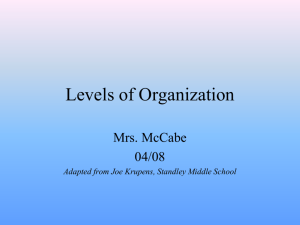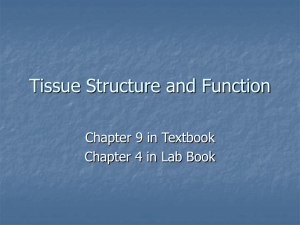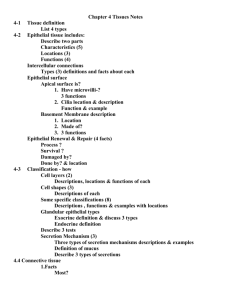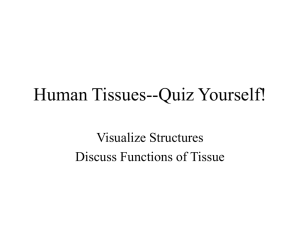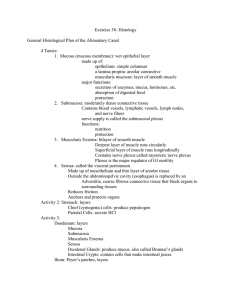Body Organization
advertisement
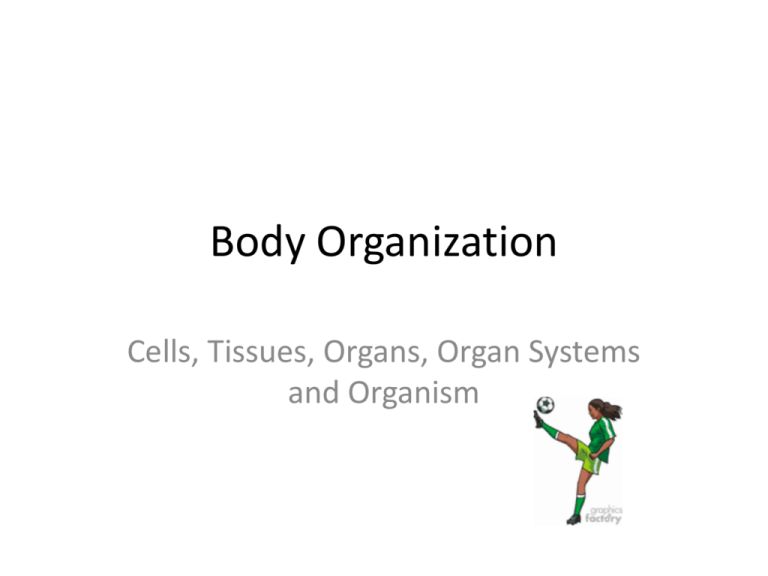
Body Organization Cells, Tissues, Organs, Organ Systems and Organism Level One: Cells • A cell is a basic unit of structure and function in a living thing. • The human body contains about 100 trillion cells. • Cells can not be seen without a microscope. • Three important structures to recall are cell membrane, nucleus, and cytoplasm. • What is the function of the nucleus? Functions of Cell Structures • Cell membrane: forms the outside boundary of the cell; materials move across the cell’s membranes • Nucleus: the control center that directs the cell’s activities and contains information that determines the cell’s characteristics • Cytoplasm: a clear, jellylike substance in which many important cell structures are found Level Two: Tissues • A tissue is a group of similar cells that perform the same function. • The human body contains 4 basic types of tissue: muscle tissue nerve tissue connective tissue epithelial tissue Muscle Tissue • Like the muscle cells that form it, muscle tissue can contract or shorten. • One kind of muscle tissue allows the body to move. • Other kinds of muscle tissue move: 1. blood through the heart 2. food through the digestive system Nerve Tissue • Nerve tissue directs and controls movement. • Nerve tissue carries messages back and forth between the brain and every other part of the body. • Nerve tissue enables you to see, hear, and think. • Your brain, spinal cord and nerves consist of nerve tissue. • Under a microscope you can see the neurons & glial cells. Epithelial Tissue • Epithelial tissue covers the surfaces of your body and the outside of your internal organs. • Under a microscope epithelial tissue looks like it is packed tight together & in sheets or layers. • Your skin is composed of 2 layers of epithelial tissue, the epidermis and dermis. It is also composed of connective, nerve & muscle tissue. Connective Tissue • Connective tissue provides support for your body and connects all its parts. • Examples of connective tissue are: bones & tendons-for support fat-provides insulation from cold & stores energy blood-travels to all parts of your body • Under a microscope connective tissue looks like fibrous strands of protein collagen Organs • An organ is a structure that is composed of different kinds of tissue. It performs a specific job. • For example, the heart pumps blood throughout the body • An interesting fact about the heart: it contains all 4 kinds of tissue! So does the skin! Organ Systems • An organ system is a group of organs that work together to perform a major function. • 11 systems make up the human body: 1. Circulatory 7. Nervous 2. Digestive 8. Reproductive 3. Endocrine 9. Respiratory 4. Excretory 10. Skeletal 5. Immune 11. Integumentary (Skin) 6. Muscular Thinking Critically • Answer the following questions: 1. What systems of the body are involved when you prepare a sandwich and then eat it? 2. Which 2 systems work together to get oxygen to your cells?





